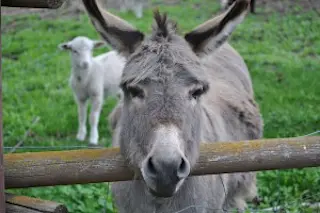Photo: flickr/bagsgrooveHave you ever wondered what kind of bacteria live on a donkey's penis? You haven't? Well, these researchers are here to tell you anyway! In an effort to fill this gaping hole in our knowledge of donkey penises and microbiology, they cultured bacterial flora from prepubertal, mature intact, and castrated donkeys. Read on for the titillating results!Bacterial and fungal microflora on the external genitalia of male donkeys (Equus asinus) "This study was undertaken to investigate the bacterial and fungal microflora on the external genitalia of a population of healthy male donkeys in the state of Michigan, USA. The aim was to identify and determine the frequency of occurrence of these microorganisms using seven different isolation media and standard microbiological procedures. The sites (urethral fossa [fossa glandis], dorsal diverticulum of the urethral sinus, distal urethra, and penile surface) in the distal reproductive tract were cultured and each isolated microorganism identified. ...
Thank heavens, someone figured out which bacteria live on a donkey's penis.
Discover the fascinating study on bacterial microflora on donkey penises, revealing diverse microorganisms living on their external genitalia.
More on Discover
Stay Curious
SubscribeTo The Magazine
Save up to 40% off the cover price when you subscribe to Discover magazine.
Subscribe













